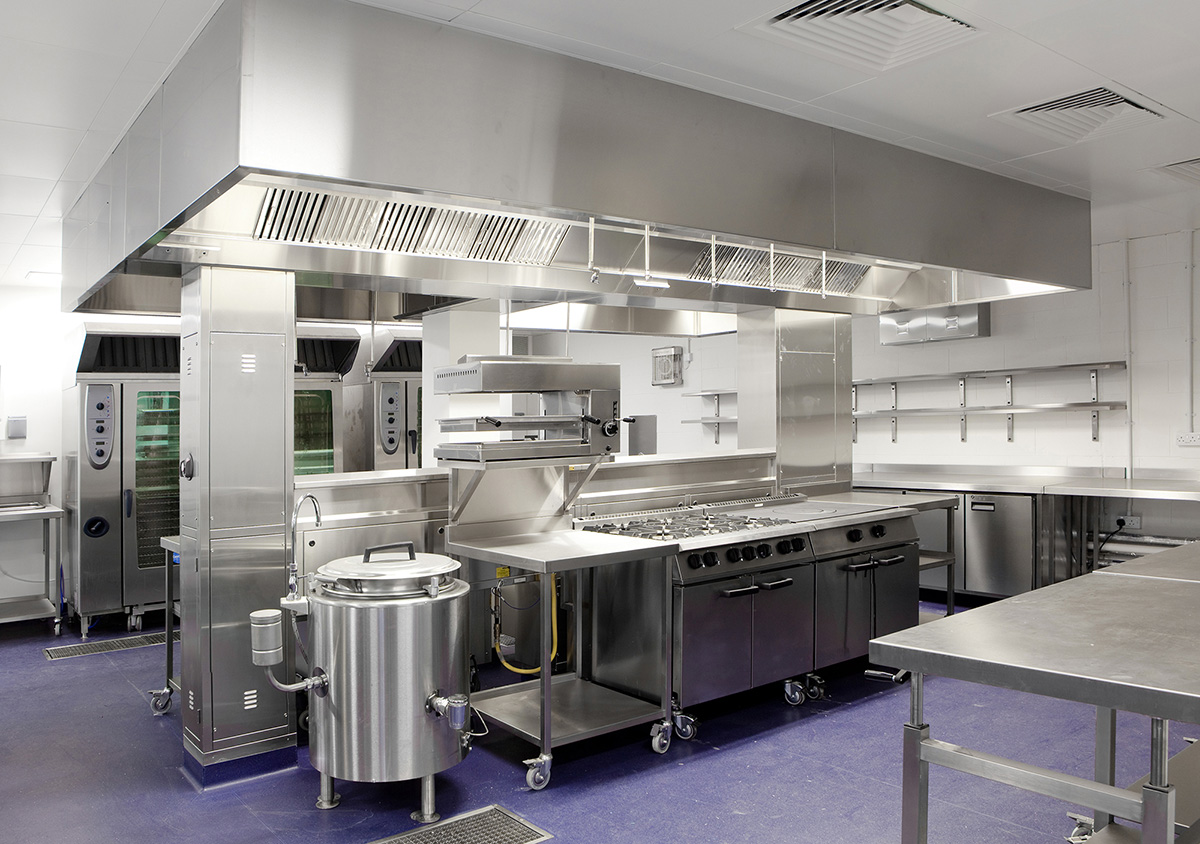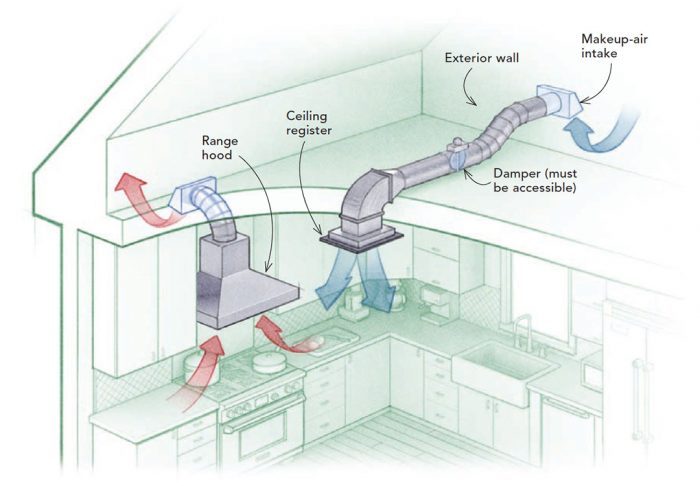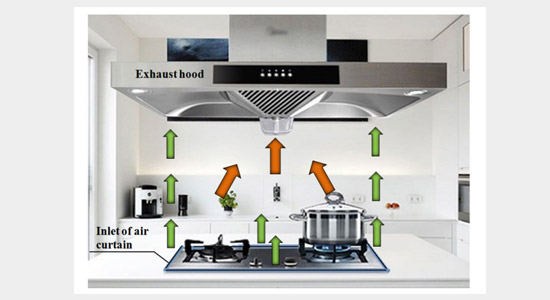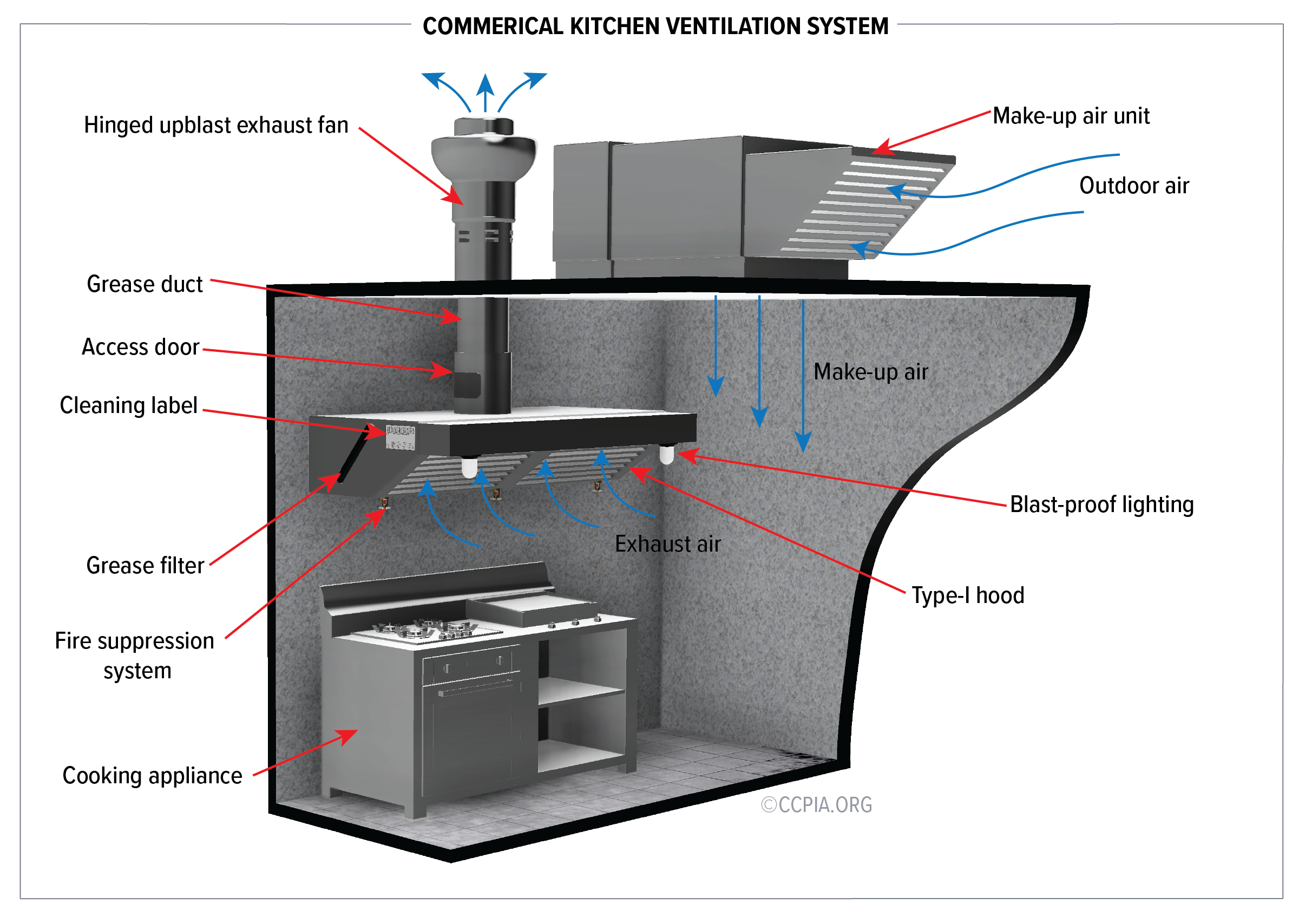A kitchen ventilation system is designed to remove smoke, heat, and grease from the air in a kitchen. It is important to install a proper kitchen ventilation system to maintain good air quality and prevent the buildup of harmful particles that can lead to health problems and fire hazards.
In addition to removing smoke and odors, a kitchen ventilation system can also help to regulate temperature and humidity levels in the kitchen. There are a variety of different types of kitchen ventilation systems available, including range hoods, downdraft systems, and island hoods.
The type of system that is best for your kitchen will depend on a number of factors, including the size and layout of your kitchen, the type of cooking you do, and your budget.
The Importance Of Kitchen Ventilation
Kitchen ventilation systems are crucial for maintaining a healthy indoor environment. Proper ventilation helps to remove excess moisture and prevent mold growth, which can lead to respiratory issues. It also helps to eliminate cooking odors and improve air quality. By filtering out airborne particles, a good ventilation system can contribute to a cleaner and more comfortable kitchen. Moreover, it plays a significant role in preventing grease buildup, which can be a fire hazard. Investing in a high-quality kitchen ventilation system is essential for both the well-being of the occupants and the maintenance of the property.

Types Of Kitchen Ventilation Systems
There are three main types of kitchen ventilation systems: range hoods, exhaust fans, and downdraft systems. Range hoods are installed above the cooking area to capture and remove smoke, steam, and cooking odors. They come in various designs including wall-mounted, island, and under-cabinet styles. Exhaust fans, also known as extractor fans, work to remove air and odors from the kitchen to the outside. Downdraft systems are typically integrated into the cooking surface and draw the air downwards, making them suitable for kitchens where overhead ventilation may not be feasible. Each type of ventilation system has its own advantages and considerations, so it’s important to choose the one that best suits your kitchen layout and cooking habits.
Key Features To Consider
The Kitchen Ventilation System is an essential component of any kitchen setup. When choosing a system, there are a few key features to consider that can greatly impact its effectiveness.
Airflow Rate: The airflow rate of the ventilation system determines how quickly it can remove smoke, steam, and odors from the kitchen. Look for a system with a high airflow rate to ensure efficient ventilation.
Noise Levels: It is important to consider the noise levels of the ventilation system, especially if your kitchen is open or connected to other living spaces. Opt for a system that operates quietly to avoid disturbance.
Filtration Capabilities: The filtration capabilities of the system determine how effectively it can remove grease, airborne particles, and odors. Ensure that the system has high-quality filters that are easy to clean or replace.
By considering these key features, you can choose a kitchen ventilation system that provides effective airflow, operates quietly, and offers efficient filtration. This will help maintain a clean and comfortable kitchen environment for both cooking and dining.
Installation Best Practices
For optimal performance, it is crucial to follow installation best practices for your kitchen ventilation system. Proper positioning of the exhaust hood, ensuring adequate ductwork, and regular maintenance are essential to maximize efficiency and air quality in your kitchen. Following these best practices will result in a healthier and more comfortable cooking environment.
Kitchen Ventilation System Installation Best Practices Proper Ducting – Ensure that the ducting used for your kitchen ventilation system is the appropriate size and material for optimal performance. – Use smooth, straight ducts to minimize air resistance and maximize airflow. – Avoid sharp turns and bends in the ducting, as this can restrict airflow and reduce the effectiveness of the system. – Seal all joints and connections in the ducting to prevent air leaks, which can compromise the efficiency of the system. – Insulate the ducting in areas where it passes through unconditioned spaces to prevent condensation and heat loss. Height and Placement – Install the exhaust hood at a height that allows for effective capture of cooking fumes and grease. – Consider the height of the cooking surface and the type of cooking being done when determining the placement of the exhaust hood. – Ensure that the exhaust hood is positioned to minimize the distance between the cooking surface and the hood for optimal capture efficiency. Hiring a Professional – It is recommended to hire a professional for the installation of a kitchen ventilation system. – A professional will have the knowledge and expertise to properly size and install the system, ensuring that it functions effectively and meets all safety and building code requirements. – Additionally, a professional can provide guidance on the best type of system for your specific needs and budget. Remember, proper installation of a kitchen ventilation system is crucial for its effectiveness and longevity. By following these best practices and hiring a professional, you can ensure that your kitchen remains well-ventilated and free from unwanted odors and pollutants.Maintaining Your Ventilation System
Regular maintenance of your kitchen ventilation system is crucial to ensure it functions properly. Cleaning the system regularly is a must to prevent the buildup of grease and dirt, which can cause a fire hazard. Cleaning should be done at least once a year or more frequently if you use your kitchen frequently.
Filter replacement is another important aspect of maintaining your kitchen ventilation system. Filters should be replaced every 6 to 12 months, depending on usage. Dirty filters can restrict airflow and reduce the efficiency of the system.
Regular inspections are also necessary to ensure that the ventilation system is functioning properly. A professional inspector can check the system for any damage, leaks, or other issues that may affect its performance. Inspections should be done at least once a year.

Innovative Technologies In Ventilation
Today’s kitchen ventilation systems are more advanced than ever, thanks to innovative technologies in ventilation. Smart range hoods are becoming increasingly popular as they can be controlled from your smartphone or integrated with your smart home system. These hoods use sensors to detect cooking activity and adjust ventilation accordingly, resulting in better air quality and energy efficiency. Energy-efficient designs are also a key feature of modern ventilation systems. These designs use less energy while still providing effective ventilation, which helps reduce your carbon footprint and energy bills. Integrated systems combine ventilation with other kitchen appliances, such as cooktops and ovens, creating a seamless and efficient kitchen experience. With these advancements, it’s never been easier to keep your kitchen clean, healthy, and comfortable.
Designing For Efficiency And Aesthetics
When designing a kitchen ventilation system, it is important to find the right balance between efficiency and aesthetics. The system should effectively remove smoke, odors, and grease from the air while also complementing the overall design of the kitchen.
Customization options play a crucial role in achieving this balance. From choosing the right hood style to selecting the appropriate size and materials, each decision contributes to the overall efficiency and look of the system.
One option to consider is a wall-mounted hood, which can be both functional and visually appealing. These hoods come in various designs, allowing you to find one that matches your kitchen’s style. Additionally, island hoods are popular choices for kitchens with a central island, as they provide effective ventilation without obstructing the view.
Another factor to consider is the type of ventilation system, such as ducted or ductless. Ducted systems are more efficient as they remove air pollutants directly outside the building. On the other hand, ductless systems use filters to remove impurities before recirculating the air back into the kitchen.
By carefully customizing your kitchen ventilation system, you can ensure it not only functions efficiently but also enhances the overall aesthetics of your kitchen.

Navigating Regulations And Building Codes
When it comes to kitchen ventilation systems, it is crucial to understand and comply with local regulations and building codes. Each jurisdiction may have specific requirements that need to be met to ensure the safety and functionality of the system.
Local requirements can vary in terms of ventilation capacity, ductwork design, and exhaust fan placement. It is essential to consult with local authorities or a professional in the field to ensure compliance with these regulations.
By adhering to the local requirements, you can avoid potential fines, penalties, or even the risk of having your kitchen shut down due to non-compliance. Additionally, following the regulations will help create a healthier and safer environment for your kitchen staff and customers.
Remember, understanding and meeting the local regulations for kitchen ventilation systems is not just about compliance; it is about prioritizing the well-being of everyone involved in the kitchen operations.
Frequently Asked Questions
What Is The Best Way To Vent A Kitchen?
The best way to vent a kitchen is by using a range hood or vent hood to remove cooking odors and steam. Make sure the hood is properly sized and vented to the outside for optimal ventilation. Regular cleaning and maintenance are also essential for effective kitchen venting.
How Much Does It Cost To Install A Ventilation System In Kitchen?
The cost of installing a kitchen ventilation system varies, but it typically ranges from $1,500 to $3,000. The final price depends on the size of the kitchen, the type of ventilation system, and any additional ductwork needed.
What Is A Kitchen Ventilation System?
A kitchen ventilation system is a system that removes smoke, odors, and grease particles from the air in a kitchen. It helps to maintain clean and fresh air, improve indoor air quality, and prevent the buildup of harmful contaminants. The system includes a range hood, exhaust fan, and ductwork to effectively remove and filter the air.
Does A Kitchen Vent Need To Be Vented Outside?
Yes, a kitchen vent needs to be vented outside to effectively remove smoke, steam, and odors from cooking. A vent that is not vented outside can lead to a buildup of grease and moisture, which can cause damage to the kitchen and pose a fire hazard.
Conclusion
A properly functioning kitchen ventilation system is essential for a healthy and comfortable environment in your kitchen. It helps to remove smoke, odors, and harmful pollutants, ensuring better air quality and reducing the risk of respiratory problems. By investing in a quality ventilation system, you can improve the overall cooking experience, maintain a cleaner kitchen, and enhance the longevity of your appliances.
Don’t overlook the importance of a well-designed and efficient kitchen ventilation system for a safer and more enjoyable cooking space.

